Discover Chunchanakatte Falls For A Refreshing Vacation Experience In 2025
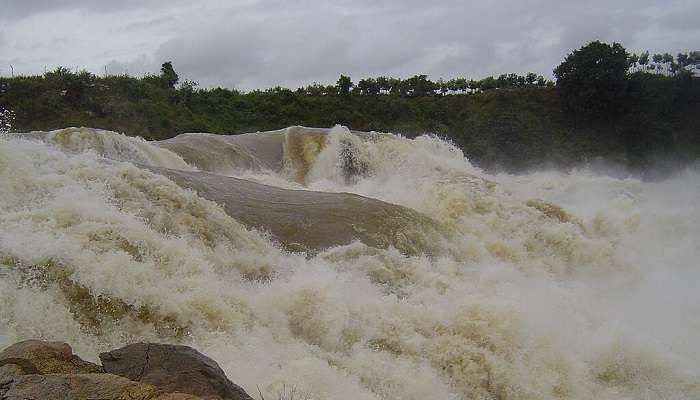
We all love waterfalls. They are graceful monuments depicting nature’s power most sublimely. You can observe a thrilling plunge in each gentle curve of the waterfalls. Today, this blog will discuss one such watery edifice- the Chunchanakatte Falls. The waterfall is an iconic spot to witness the true wonders of nature in Mysore. Though it might not be the one featuring water falling from higher peaks, this waterfall remains a vital spot to visit. Let us tease through its history and present-day importance and learn how to travel and tour Chunchanakatte Falls correctly.
Overview Of Chunchanakatte Falls
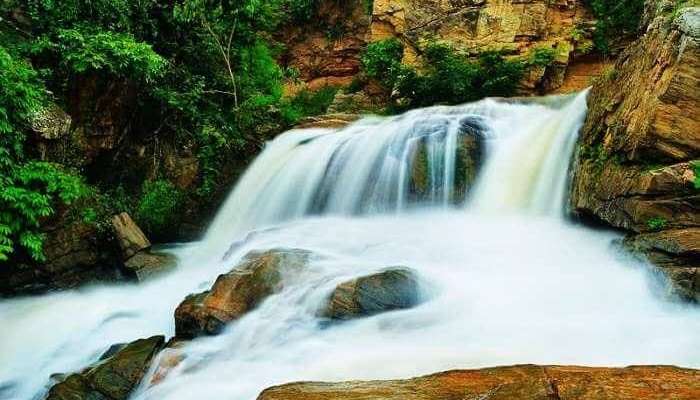
Chunchanakatte Falls is one of the most notable waterfalls on the Kaveri River. It is located near the village of Chunchanakatte in the Saligrama sub-district of Mysore, Karnataka. The state of Karnataka is known for its ethereal beauty and awe-inspiring elements; this waterfall is no exception. Here, water cascades from a height of around 20 metres. The waterfall is situated on the Western Ghats, where the river falls into small cascades before becoming one and flowing again.
The streams that split and wash down the cascade, showcasing immense white foaming streams, are a treat to watch here. The water divides into two streams and then blends into one after reaching the ground. The Chunchanakatte Falls is located near the ancient Kodandarama temple dedicated to Lord Rama. When you get to this temple, the echoes of the waterfalls fade away, which is quite surprising. During the season, travellers can simply climb up the rocky terrain and get a better view of the falls. During monsoon season, the flow is relatively high, and doing so is not advisable.
Why it matters: travel, touring
Interesting Fact: The falls divide into two separate streams before merging back together, creating a mesmerising visual effect.
Must Read: Lingambudhi Lake
History Of Chunchanakatte Falls
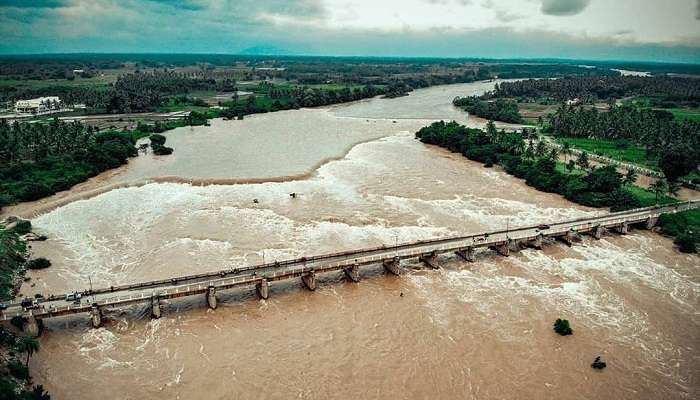
The sacred site of Chunchanakatte is where Lord Sri Rama paused during his vagabond journey and accepted the hospitality of Chuncha and Chunchi, two tribal couples. This location is significant because the thunderous falls can be heard everywhere but not inside the centuries-old temple’s sanctum sanctorum. According to legend, Lord Rama cursed that a woman’s tongue should not be sharp because the Cauvery River is considered female. This meant that the river’s noise would not be audible inside the sanctum sanctorum.
Additionally, legend has it that Lord Rama gave Lakshman the task of shooting an arrow at a rock because Sita Mata was exhausted and needed a bath. Three shades of water—one containing turmeric, another containing oil and a third containing shikakai, a fruit used as a natural shampoo—started to spill out as soon as Lakshman fired the arrow. Even now, when a significant amount of water runs over the falls, these hues are discernible. The area, even today, is like a veritable paradise with the best of nature. According to the legends, Goddess Sitha Matha enjoyed a soak in the waterfalls and it is therefore also known as Sithamaduvu.
Why it matters: historical significance, mythological stories
Interesting Fact: Legend states that Lord Rama cursed the falls to be silent inside the temple as a symbol of restraining a woman’s sharp tongue.
About Kodandarama Temple
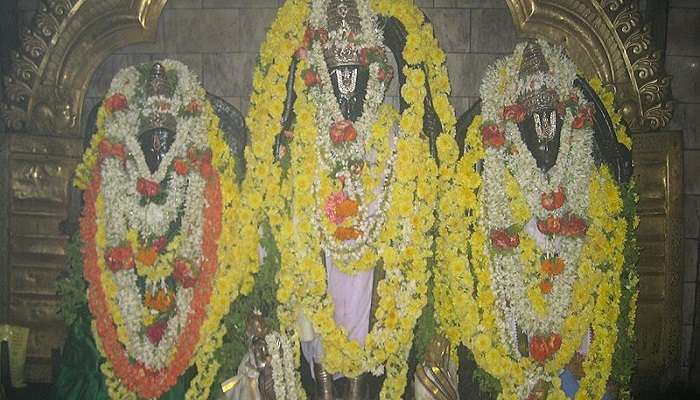
Many travellers who visit Chunchanakatte Falls ensure that they include Kodandarama Temple in their travel itinerary. The temple is built in honour of Lord Kodandarama. Because Sita stands to the right of Sri Rama rather than the customary left, the idols established here are distinctive. Legend has it that the tribal couple Chuncha and Chunchi begged Lord Rama to stay here during their time in the jungles. There was no water present at the time. When Sita desired to bathe, Lord Rama gave his brother Lakshmana the order to grant her request. After Lakmana fired an arrow into the rocks, a large amount of water began to flow, allowing Sita Devi to bathe. Lord Rama also encountered Agnatha Rishi (an Unknown Sage) in this forest.
Impressed by the Rishi’s devotion to Lord Narayana, Rama requested the Rishi to ask for a blessing, and the Rishi replied that he wished to see Lord Rama with Sita by his side. The idol was set up in the same way that the boon was granted. Two Hanuman temples may be found at the Kodandarama Temple: one at the entrance and the other by the river. The incredible thing about this temple is that, despite the loud noise produced by the falls next to it, there is no sound of the roar inside the Garbhagudi or Sanctum Sanctum. The falls appear to be nonexistent.
Why it matters: travel, adventure
Interesting Fact: The idols in Kodandarama Temple are unique, with Sita standing on Rama’s right, contrary to traditional depictions.
Suggested Read: Sanjeevini Park
The Beauty Of The Chunchanakatte Falls
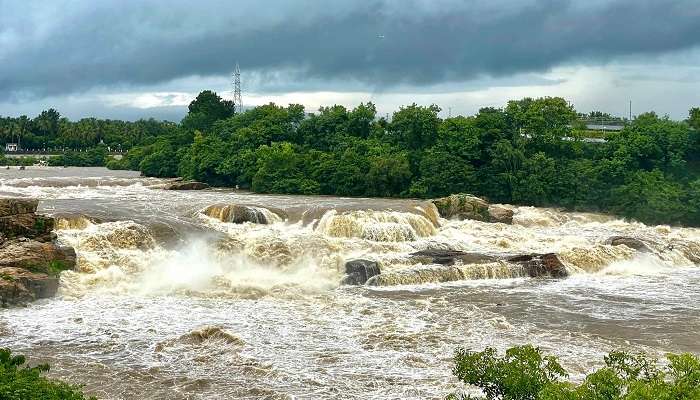
Kaveri river is the lifeline of Southern India and especially in states like Karnataka. Here in Mysore, Kaveri flows into the place called Chunchanakatte. The stream is thunderous and forms a 60 feet height. This makes the Chunchanakatte Falls run with gushing streams and spread across 400 feet, becoming one of the widest ones in the state. The waterfall spot is situated 57 km from Mysore. When the river reaches the cascade, it is divided into two streams and hence, two separate falls are observed. These become one as soon as the water comes down, becoming a united Kaveri river, which then plunges into Krishna Raja Sagar Dam.
When here, you will see the deafening roar of the water and the spray from the walls. As refreshing as it seems, the view also helps us realise the power of nature. The milky white falls are created by the water pouring out of every crevice in the rocky bed and the brown water in some regions of the falls symbolises the fertility that Kaveri River delivers to the Deccan Plateau. A significant amount of water can be seen whooshing to a distance of roughly 10 feet from the protruding stony bed at one angle, where it then cascades into the river, demonstrating the force with which it rushes. This force is effectively harnessed and a hydraulic power-producing station has been set up.
Why it matters: travel, adventure
Interesting Fact: The falls are one of the widest in Karnataka, spreading across 400 feet.
Getting There And The Location
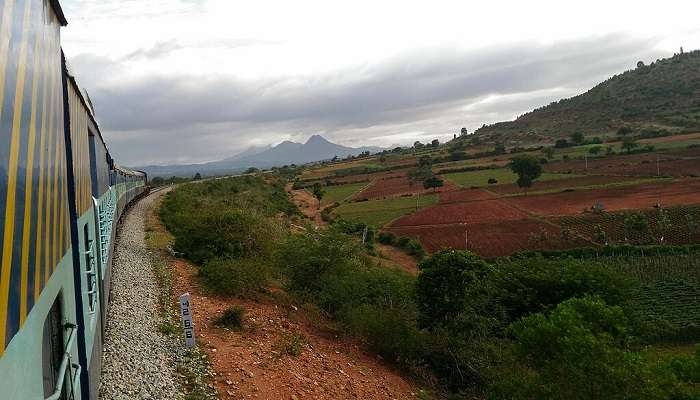
Reaching the Chunchanakatte Falls is quite straightforward. You need to get to the Mysore-Hassan highway and take a detour near Krishnarajanagara to reach the waterfall. The detour is located on the left at the KR Nagar town circle, where it meets the KR Nagar-Holenerasipura route (SH 108) that passes through Saligrama. The waterfall can be reached by taking a right turn at Chunchanakatte Village. It is situated around 7 kilometres from Saligrama, the taluk headquarters and 14 km from KR Nagar, the town. Numerous Kannada films have used this location, which has served as a haunt for numerous politicians and movie stars, the most well-known of whom is Rajkumar. Farmers and workers from a nearby sugar mill, as well as the power generation facility, make up the majority of the population in this area.
The waterfall is just an hour from Mysore, 14 km from K.R. Nagar and 7 km from the Saligrama Block headquarters. It has excellent road connectivity. Buses run regularly between Mysore and Chunchanakatte. Although K.R. Nagar is recognised for its hotels, bakeries and small restaurants, the area may not be too apt for facilities. This area is also well-known for both sugar and paddy. The Cauvery River runs around Chunchanakatte and empties into the KRS dam reservoir. Many Hindus consider it a sacred site, as Lord Sree Kodanda Rama stopped here en route to Lanka.
Why it matters: travelling
Interesting Fact: Numerous Kannada films have used Chunchanakatte Falls as a filming location, highlighting its cinematic appeal.
Further Read: St. Philomena’s Cathedral
If you love waterfalls, you will surely fall in love with the beauty and the immense power of the Chunchanakatte Falls. As described above, the waterfalls are not just a good tourist spot but also carry significant spiritual and religious importance. The only way to experience it all is to visit these waterfalls and discover their beauty with your own eyes. Plan your trip to Mysore for a complete getaway, including the Chunchanakatte Falls visit.
For our editorial codes of conduct and copyright disclaimer, please click here.
Cover Image Credit: Rks 80 for wikimedia commons
Frequently Asked Questions About Chunchanakatte Falls
What is the Chunchanakatte Falls Location?
The Chunchanakatte Falls location is G74W+F98, Chunchanakatte, Haliyur, Karnataka 571604. You can visit this place by public transport or hire a personal cab/taxi.
What are the timings of Chunchanakatte Falls?
The Chunchanakatte Falls open early at 6:30 am and stay open till 8:00 pm. Plan your visit during this time with your loved ones.
When is the best time to visit Chunchanakatte Falls?
The waterfalls are best during the dry season due to less water. During this time, you can climb on the rocks and get a better view.
Is it comfortable to reach Chunchanakatte Falls during the rainy season?
The waterfalls are in full glory during monsoon. However, going closer is not good as the streams are heavy and can be fatal.
What is the height of the Chunchanakatte Falls?
The water in Chunchanakatte Falls cascades down from a 20-metre drop. It is situated in the western ghats where two small cascades of river falls joins.
People Also Read:
Devaragundi Falls Abbey Falls Tada Falls

Unveil the hidden treasures of the globe and turn every travel dream into reality. As a Content Writer, I am passionate enough to craft stories from ancient wonders to modern marvels. My words paint the picture-perfect itinerary for unforgettable experiences. Let my words be your trusted guide to immerse in the diverse culture and discover the beauty of the unknown.











